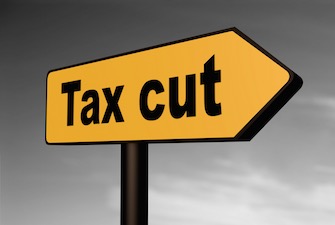 Many countries have enacted a patent box regime in order to spur innovation and create domestic manufacturing jobs. Simply stated, a patent box regime provides a lower tax rate on income from the exploitation of patented goods than for other income. Among the countries that have patent box regimes are China, Belgium, the United Kingdom, France, the Netherlands, Italy and Belgium. See B. Knight & G. Maragani, It is Time for the United States to Implement a Patent Box Regime to Encourage Domestic Manufacturing, 19 Stanford Journal of Law, Business & Finance p. 39 (Fall 2013).
Many countries have enacted a patent box regime in order to spur innovation and create domestic manufacturing jobs. Simply stated, a patent box regime provides a lower tax rate on income from the exploitation of patented goods than for other income. Among the countries that have patent box regimes are China, Belgium, the United Kingdom, France, the Netherlands, Italy and Belgium. See B. Knight & G. Maragani, It is Time for the United States to Implement a Patent Box Regime to Encourage Domestic Manufacturing, 19 Stanford Journal of Law, Business & Finance p. 39 (Fall 2013).
A patent box regime can incentivize both domestic and foreign manufacturers to set up manufacturing in a country to take advantage of a lower tax rate on profits derived from intellectual property. Many multi-national companies have relocated intellectual property sourced assets and manufacturing to foreign countries without previously having manufacturing activities in that country related to the intellectual property. See Countering Harmful Tax Practices More Effectively, Taking Into Account Transparency and Substance, the Organisation for Economic Cooperation and Development (OECD, 2014). Given how much U.S. workers have suffered over the last generation, anything that has the potential to reinvigorate manufacturing must be seriously considered.
The exact terms of a patent box will vary depending on what the drafter is trying to promote. For example, the tax preference could require that the profits be derived only from a patent secured in that country or that the patented product be the result of domestic R&D. I have suggested in prior articles that a patent box regime in the United States should include the following characteristics:
- A reduced tax rate of between 5 percent and 15 percent, compared with a regular tax rate of approximately 35% on corporate profits. This would allow the U.S. to compete with already-existing patent box regimes in China and the European Union. Otherwise, there is little incentive to locate the manufacturing within the U.S.
- A requirement that the patented product for which the corporation is electing to use the patent box be manufactured in the U.S. This is the cornerstone of any patent box regime. It ensures job creation and follow-on R&D. See Knight & G. Maragani (Fall 2013), supra.
- Apply only to patents issued by the USPTO. As a matter of patent policy, this helps to enhance the value of U.S. patents.
- No requirement that the patented product be the result of domestic R&D. This helps to promote the repatriation of foreign sited manufacturing to the U.S.
- Apply to all existing patents rather than only to patents issued after a particular date. This increases the immediate impact of the patent box.
- Apply to worldwide income attributable to the domestically produced patented product. This recognizes the global reach of many U.S. companies.
- Allowing deductions of losses and expenses attributable to the qualifying IP at the standard corporate income tax rate. This avoids penalizing companies that take risks when they commercialize IP. Innovation is risky and some inventions are not successful in the marketplace. This incentivizes companies to attempt to market their qualifying IP.
- Apply to a wide range of domestically manufactured patented products. For example, software should be eligible.
Provide the option for a company to use a standardized formula or develop its own method to determine its income from the domestically-produced patented product. Businesses must be able to determine with reasonable certainty what income will qualify for the patent box.
For a more detailed discussion of these characteristics, see B. Knight & G. Maragani, supra; See B. Knight & G. Maragani, As Part of Any New Patent Legislation, the New Congress Should Enact a Patent Box Regime to Bolster America’s Competitiveness for New Innovation and Increase Job Opportunities for the Middle Class, BNA Insights: Health :Law Resource Center (January 9, 2015).
Congressman Charles Boustany, Jr. (R-LA) and Congressman Richard E. Neal (D-MA) recently released a discussion draft of proposed legislation that would enact a patent box regime in the United States. Boustany’s press release states that “U.S.-based multinational corporations are under increasing pressure to move more innovative development and production activities offshore.” This is the product of lower production costs abroad, including lower foreign tax rates.
The Boustany-Neal draft legislation is called the “innovation box” and would impose an effective tax rate of 10% on all innovation box profits by creating a deduction equal to 71% of a corporate taxpayer’s innovation box profit. Simply stated, innovation box profit is gross receipts from the sale, lease or license of qualified IP property less the cost of goods sold and other expenses attributable to those receipts. One significant limitation in the availability of the deduction is that it is available only to the extent of domestic R&D expenditures to a company’s other defined costs. Consequently, a company with no domestic R&D would not be entitled to take advantage of the patent box. This is one difference with my proposed structure for a U.S. patent box regime. This limitation imposed by Boustany and Neal appears aimed at a concern in Europe with countries utilizing the patent box as a means of becoming a tax haven. Some believe that requiring R&D to be domestically sourced is a way to make certain that there is a sufficiently significant connection with the patent box country to justify the lower tax rate on innovation profits. Alex Parker highlights this concern in his article as an issue the Organization for Economic Co-operation and Development (OECD) is currently investigating, noting that the OECD will likely propose a similar R&D requirement in future policy recommendations. The draft bill also includes a provision that would enable a foreign subsidiary to repatriate appreciated intellectual property into the United States in a non-taxable event.
One of the tremendous advantages of a patent box regime, besides creating U.S. jobs and encouraging innovation, is that it should result in an immediate appreciation in the value of U.S. patents. Patents will be more valuable if the income derived from them is taxed at a much lower rate. The U.S. House of Representatives will be addressing international tax reforms this fall as part of a large tax overhaul effort. Congressman Paul Ryan (R-WI), who is the Chair of the House Ways and Means Committee, issued a press release praising the Boustany-Neal innovation box proposal and stating that it may be considered as part of the upcoming international tax reform.
The United States should consider a patent box regime as a component of any tax reform legislation in order to make American business more competitive, spur innovation and R&D, and enhance the value of U.S. patents.

![[IPWatchdog Logo]](https://ipwatchdog.com/wp-content/themes/IPWatchdog%20-%202023/assets/images/temp/logo-small@2x.png)


![[Advertisement]](https://ipwatchdog.com/wp-content/uploads/2024/04/Patent-Litigation-Masters-2024-sidebar-early-bird-ends-Apr-21-last-chance-700x500-1.jpg)

![[Advertisement]](https://ipwatchdog.com/wp-content/uploads/2021/12/WEBINAR-336-x-280-px.png)
![[Advertisement]](https://ipwatchdog.com/wp-content/uploads/2021/12/2021-Patent-Practice-on-Demand-recorded-Feb-2021-336-x-280.jpg)
![[Advertisement]](https://ipwatchdog.com/wp-content/uploads/2021/12/Ad-4-The-Invent-Patent-System™.png)






Join the Discussion
6 comments so far.
Amused
September 22, 2015 01:03 pmMy favorite thing about the patent box idea is that it would generate a new market for infringement opinions: tax lawyers, who will need justification for writing off the profits from “patent-related” products.
Alex
September 14, 2015 06:09 pmI do not see how this is, in any way, advantageous over simply lowering the total corporate tax rate to this special “patent box” rate, which seems like a bit of an accounting nightmare (to mirror Kevin Rieffel’s sentiments above).
Moreover, I do not see how this would decrease the utility of invalidating patent claims, unless the company itself does not have a patent on the device (which for most of the major disputes they do). I suppose it could create an entire new industry of rent seekers willing to sell you a patent to “use” thus reducing your tax bill, for a fee. Also, there is the most important rebuttal to such a proposition: every patent holder will be gaining a powerful new enemy seeking to invalidate patents: The Internal Revenue Service.
Gene Quinn
September 14, 2015 12:38 pmKevin-
I am no expert on tax policy, but one thing that is clear is that ever since the USPTO began publishing patent applications large corporations have ceased complaining about how long it takes to get a patent. At least some large corporations are directly responsible for how easy it is to defeat a patent, as well as the anti-patent climate in general. A patent box would provide a directly opposite incentive. To receive a 70% discount on your taxes you would need to get a patent quickly, and you would need to maintain the validity of the patent (presumably). The patent box would dramatically shift the anti-patent climate to a pro-patent climate.
-Gene
Gene Quinn
September 14, 2015 12:36 pmBemused-
If the patent box passes it will certainly increase the value of patents and dramatically decrease the utility of being able to so easily invalidate patent claims.
-Gene
Kevin Rieffel
September 14, 2015 09:38 amHi Bernard and IPWatchdog friends,
Forgive my lack of research on the subject, but I have a couple questions:
(1) Is it a forgone conclusion that, in any future US legislation, the manufacture and sale of a product covered by a patent would qualify as income inside the box or would it just be a portion of the proceeds? i.e., licensing royalties for an NPE patent owner would likely be in the box (all of the X% royalty rate), but if BigCo licenses that patent and makes/sells a product related to that patent, how much of the sale price of the product qualifies for the lower rate (e.g., 100%, 100-X%, or some other Y%)?
(2) I hear the patent box spoken of more often as an “IP box” these days–my understanding is that it would include copyrights (and possibly trademarks) in addition to patents as qualifying for the lower rate. (A) isn’t everything (if you have a clever attorney) covered by IP and this could just be a [perceived] corporate tax cut? (B) Wouldn’t this minimize any presumed appreciation of patent value?
(3) Because the patenting process takes a long time, does a patent box actually incentivize any behavior or merely reward patent holders after the fact?
Thanks for any input or thoughts.
Bemused
September 13, 2015 07:23 pmMr. Knight, what happens if the patent, pursuant to which the patented goods are subject to the lower patent box tax rate is invalidated? For example, if I’m selling widgets and my profits are being taxed at the lower patent box rate and my widget patent is subsequently invalidated, are the widgets then subject to the higher/regular corporate tax rate? The reason I ask is because given the extraordinarily high patent kill rate at the PTAB, it begs the question of how effective a patent box regime will be if the patent(s) underlying a particular article of manufacture can be so easily invalidated.